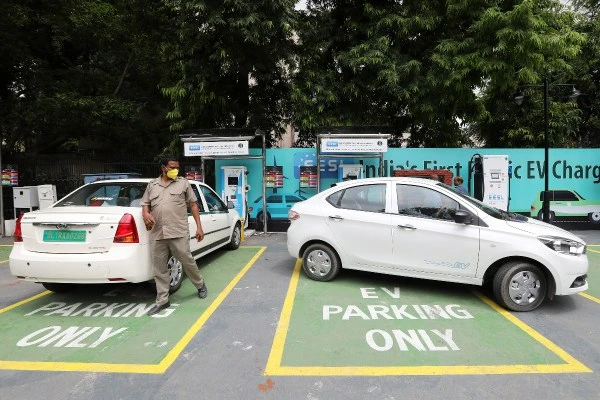India’s Electric Vehicle Journey in 2024
india, a significant player in the global automotive industry, has embarked on a transition to alternative fuels to combat pollution, following the expansion of consumer and vehicle bases and the establishment of local manufacturing facilities over the past two decades.
In the current landscape, 2024 is poised to be a pivotal year for the nation as it grapples with the challenge of providing accessible growth capital to late-stage startups and endeavors to attract foreign Electric Vehicle (EV) manufacturers such as Tesla to enter the domestic market.
The Current ev Scenario in India
In 2023, india, the world’s largest two- and three-wheeler manufacturer, experienced remarkable sales, including commercial and personal vehicles. Notably, of the total vehicles sold, more than 1.5 million were electric vehicles, capturing 6.35% of the total base.
As per the latest data, the impressive growth of Electric Vehicle sales in the country over the past few years demonstrates a notable shift in consumer preferences towards sustainable transportation solutions.
Impact of FAME-II and Subsidy Changes
A notable factor that impacted the Electric Vehicle market in India was the revision of subsidies under the Faster Adoption and Manufacturing of (Hybrid and) Electric Vehicles (FAME-II) scheme. The abrupt cut in subsidies adversely affected sales, particularly electric two-wheelers.
Despite the temporary setback, the market has demonstrated resilience, with industry leaders adapting to the new subsidy dynamics and anticipating a more gradual yet sustainable growth trajectory.
Government Initiatives and industry Responses
Recognizing the critical role of government support in driving sustained ev market growth, industry players have urged for predictability in policies and a phased approach in subsidy tapering to facilitate long-term planning and investment.
In addition to the FAME-II scheme, the Indian government has implemented a production-linked incentive scheme to bolster domestic Manufacturing of automobile and auto components, garnering positive responses from leading car manufacturers.
Evolving Consumer Landscape
Moreover, the evolving consumer landscape, characterized by a trend of ‘premiumization’ in the electric two-wheeler market, underscores the growing acceptance of EVs as viable and desirable modes of transportation.
Notably, the market has witnessed increasing sales from tier two and tier three towns, indicating a broadening adoption of electric Vehicles beyond metropolitan areas.
The Rise of Commercial ev Use Cases
Beyond personal mobility, investors and industry experts are optimistic about the burgeoning opportunities in the commercial use of electric vehicles. As businesses increasingly prioritize the total cost of ownership, the commercial segment is projected to drive substantial traction in the coming years.
Navigating Future Challenges and industry Outlook
Despite the current subdued trends in funding and investments, stakeholders remain optimistic about the potential resurgence in capital flow in 2024, underpinned by India’s growing global presence and its increasing significance in the ev landscape.
As the government works on a new EV policy to attract foreign carmakers and bolster the domestic electric car segment, industry players are proactively addressing adoption challenges and collaborating on standardized charging solutions, thereby charting a promising trajectory for India’s Electric Vehicle journey in 2024.
As a leader in the automotive industry, india‘s transition to electric vehicles will significantly impact the global electrification revolution. The nation’s concerted efforts to address infrastructure, policy, and consumer needs will be influential in shaping the future of electric mobility not only within the country but also on a global scale.
Source: techcrunch








No Comments